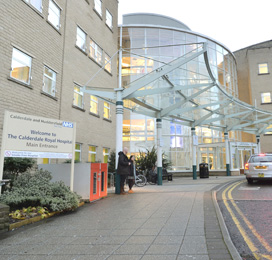In Yorkshire, Calderdale Royal Hospital opened in 2001, after becoming one of the country’s first private finance initiatives (PFI). Operated by Calderdale and Huddersfield NHS Foundation Trust, it was built at a cost of over £100m by the Catalyst Healthcare consortium and Bovis Lend Lease.
It offers day case and outpatient services, an accident and emergency department, as well as specialist services. Calderdale Royal Hospital’s mental health and learning disability facility is one specialist unit. Dan Lewins, Estates Manager at Cofely GDF Suez, which manages the site, says: ‘Unfortunately, patients within this part of the hospital were deliberately activating smoke detectors located in their rooms using steam from showers, aerosols and cigarettes. The problem had escalated to a level where the local fire and rescue service was being called out several times a week.’
Such unwanted alarms are a nationwide problem; the UK has hundreds of thousands of false and unwanted fire alarms a year. Besides the financial cost and the potential for loss of life, due to services being diverted to an unwanted alarm attendance from a real fire emergency, within hospitals, all unwanted alarms are disruptive and not without risk in an evacuation. However, many unwanted alarms can create disbelief and complacency, which may cause people to delay when a real fire occurs.
Calderdale Royal Hospital contacted Shipley based Rosse Systems. Dave Thewlis, the company’s Sales Director, says: ‘With over 30 years of experience and knowledge in the fire detection industry, we have vast expertise in providing industry leading life safety solutions. Having been a Notifier partner for over 20 years, we know that its innovative technology is reliable, robust and has the ability to minimise unwanted alarms.’
Central to Rosse Systems’ proposal was the replacement of optical smoke detectors with Notifier’s SMART4 devices. The acronym stands for self-optimising multi-criteria alarm recognition technology and by using a combination of carbon monoxide, heat, optical smoke and infrared flame sensing elements, SMART4 provides its makers Honeywell claim warning of a range of fire conditions, whilst minimising unwanted alarms.
Derek Portsmouth, National Sales Leader UK and Ireland at Notifier, says: ‘SMART4 dynamically adjusts the detection profile of the device in response to the input from the sensors. It normally operates at a high immunity level, changing to become very sensitive to fires when fire characteristics are sensed. In this way transient nuisances are monitored and ignored and the detector thinks before activating, making it the most intelligent device of its kind on the market today.’
Many of the patients in the mental health and learning disability facility are vulnerable, so the work had to be planned so that no more than 25 per cent of total fire detection cover was lost on each day. Dave Thewlis adds: ‘We decided to replace a loop at a time and this meant that patients could be temporarily relocated while work was carried out. We fitted 70 devices in total and the ease of installation offered by SMART4 meant that the process ran incredibly smoothly.’
Control panels were also replaced with Notifier’s ID3000 products, which can take between two and eight addressable loops. Each loop can support up to 198 devices, with a total of up to 255 zones per panel, and its modular design allows for a range of applications, facilitating installation and servicing the installers say.
The Calderdale Royal Hospital also now has Notifier’s ONYXWorks system, described as a single-point of control, PC based, graphical workstation which displays information from the fire detection system, presenting floor plans, as well as a history manager that tracks, stores and filters events for viewing.
Since the SMART4 devices have been installed, unwanted alarms have been eliminated, the hospital reports. Rosse Systems is working on service, maintenance and replacement, which will eventually see Notifier’s solutions used across all other areas of the 21-panel network.
Dan Lewins of Cofely GDF Suez says: ‘The events that took place at the Royal Marsden Hospital in London in 2008 offered a vivid reminder of the implications of a serious hospital fire. It’s therefore something that we must avoid at all costs, while at the same time ensuring that unwanted alarms are kept to a minimum. Thanks to Rosse Systems’ expertise and Notifier’s pioneering technology, since installation no unwanted alarms have been reported from patients’ bedrooms in the mental health and learning disability facility – an outstanding achievement that we are now looking to replicate across the entire estate.’
About Notifier by Honeywell
Notifier by Honeywell is a manufacturer and supplier of engineered fire alarms; visit www.notifierfiresystems.co.uk.









